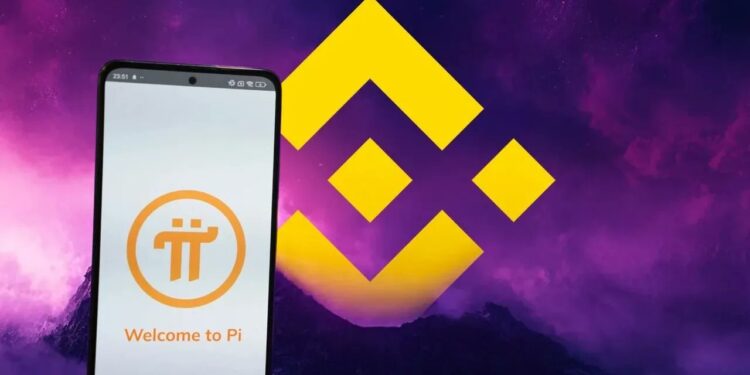Introduction: Binance Sets a New Benchmark for Listings
Binance, the world’s largest cryptocurrency exchange by trading volume, has always played a decisive role in shaping the crypto ecosystem. With millions of daily active users and one of the most liquid markets in the industry, the projects listed on Binance often experience a massive boost in credibility, adoption, and market capitalization.
In 2025, Binance officially unveiled a new framework for token listing standards, designed to prioritize projects that demonstrate transparency, strong fundamentals, and long-term sustainability. This move reflects a growing maturity in the digital asset industry, where investors demand clearer guidelines, better tokenomics, and more trustworthy projects.
Among the projects under community speculation is Pi Network, a mobile-first mining initiative that has already amassed millions of global users. With its unique mission of financial inclusion and a community-driven growth model, many wonder if Pi could meet Binance’s new standards and secure a coveted listing.
In this article, we will break down Binance’s listing framework, analyze Pi Network’s strengths, and explore what a potential Binance listing could mean for the project and the broader crypto ecosystem.
Binance’s New Listing Criteria: A Closer Look
When evaluating whether to list a cryptocurrency, Binance now focuses on three primary dimensions. These criteria not only determine a project’s immediate eligibility but also its long-term viability in a competitive market.
1. Project Fundamentals
Fundamentals refer to the core mission, technology, and utility behind a project. Binance has made it clear that it favors tokens that:
- Solve real-world problems.
- Offer innovative yet practical use cases.
- Are backed by strong development teams with a track record of execution.
In essence, projects without a clear roadmap, use case, or active developer engagement are less likely to pass Binance’s filter.
2. Tokenomics
Tokenomics is the backbone of a cryptocurrency’s sustainability. Binance assesses:
- Supply distribution (fair launch vs. heavy insider allocation).
- Incentive mechanisms for early adopters vs. long-term holders.
- Inflation/deflation models.
- Utility of the token within the ecosystem.
Poorly designed tokenomics can lead to extreme volatility, pump-and-dump scenarios, or a collapse in investor trust. By contrast, well-balanced tokenomics encourage participation and long-term network growth.
3. Market Performance
Finally, Binance evaluates a token’s market behavior and adoption metrics, such as:
- Liquidity levels across different markets.
- Trading volume consistency.
- Community engagement on platforms like X (Twitter), Discord, and Telegram.
- Real-world partnerships and adoption metrics.
This criterion ensures that projects are not only theoretically promising but also practically active in the marketplace.
Why These Standards Matter
Cryptocurrency markets have long been criticized for their lack of transparency and the presence of low-quality projects. Binance’s stricter guidelines aim to:
- Protect investors from scams and unsustainable tokens.
- Encourage projects to build robust ecosystems instead of chasing quick profits.
- Strengthen the reputation of the crypto industry in the eyes of regulators and institutional investors.
For users, this means that tokens listed on Binance will undergo far more rigorous scrutiny than ever before—raising confidence in their legitimacy.
Pi Network: A Unique Candidate in the Spotlight
Now that Binance has defined its new standards, where does Pi Network stand?
Pi Network has become one of the most widely discussed crypto projects in recent years. Its model of mobile mining—where users can earn Pi tokens simply by pressing a button daily without energy-intensive hardware—has made it accessible to millions of people worldwide, especially in developing regions.
Let’s examine Pi Network against Binance’s three criteria.
1. Strong Project Fundamentals
- Mission of Financial Inclusion: Pi aims to democratize access to cryptocurrency. By allowing mining on smartphones, it breaks the barriers that traditionally excluded people who lack expensive equipment or stable electricity.
- Community-Driven Ecosystem: The project emphasizes decentralization and grassroots growth. Pi is not just a coin but also an ecosystem of apps, peer-to-peer transactions, and real-world commerce.
- Developer Engagement: The Pi Core Team has consistently rolled out testnet phases, hackathons, and ecosystem-building activities.
These fundamentals align with Binance’s preference for projects that combine innovation with inclusivity and practical utility.
2. Tokenomics Design
Pi Network’s tokenomics focus on:
- Gradual Supply Distribution: Coins are mined progressively, with decreasing rewards over time to encourage early adoption.
- Community Incentives: Users who contribute by inviting others or validating transactions receive additional rewards.
- Balanced Demand and Utility: The Pi token is envisioned not just as a store of value but as a medium of exchange within its ecosystem (Pi Apps, Pi Marketplace).
Although some critics highlight the project’s ongoing closed mainnet as a limitation, the overall tokenomics design reflects a careful balance between accessibility and sustainability.
3. Market and Community Performance
- Massive Global Community: Pi boasts over 47 million users globally, with particularly strong adoption in regions like Southeast Asia, Africa, and Latin America.
- Grassroots Adoption: In many communities, Pi is already being used for informal peer-to-peer trades, even before full exchange listings.
- Brand Recognition: Few unlisted crypto projects have achieved Pi’s level of global awareness.
This high level of community engagement and real-world testing strengthens Pi’s position as a serious contender under Binance’s new criteria.
What a Binance Listing Could Mean for Pi Network
If Pi Network meets Binance’s listing standards and secures approval, the implications would be significant.
1. Increased Credibility
Being listed on Binance is often seen as a seal of approval. For Pi, it would mean validation after years of building and skepticism. This could shift public perception from “experimental project” to “legitimate cryptocurrency.”
2. Higher Liquidity and Accessibility
Binance’s global user base would immediately provide Pi with substantial trading volume and liquidity. This would make Pi more attractive not only to retail users but also to institutions and developers building apps within the Pi ecosystem.
3. Greater Ecosystem Growth
With higher liquidity, Pi Apps and marketplaces would benefit from increased activity. Merchants and developers would have more confidence to integrate Pi into their platforms.
4. Competitive Positioning
A Binance listing would position Pi alongside other top-tier cryptocurrencies, allowing it to compete directly with projects like Cardano, Solana, or even Bitcoin in terms of visibility.
Potential Challenges Ahead
While Pi has strong fundamentals, it also faces hurdles:
- Mainnet Transition: The project must fully transition from closed mainnet to open mainnet to demonstrate real-world functionality.
- Regulatory Scrutiny: Like many crypto projects, Pi must ensure compliance with evolving regulations.
- Skepticism: Some in the crypto community remain cautious about Pi’s model, citing delays and lack of open tradability.
Binance will likely weigh these factors heavily before making a decision.
Broader Implications for the Crypto Industry
Binance’s new standards go beyond just Pi. They reflect a broader shift in the industry:
- Higher Quality Listings: Exchanges are no longer competing on the quantity of coins listed but on the quality of projects they host.
- Institutional Appeal: Clearer guidelines attract institutional investors seeking transparency.
- User Protection: Investors benefit from a safer trading environment, reducing the risk of scams and failed projects.
For everyday users, this signals a healthier ecosystem where listed tokens have stronger chances of long-term survival.
Frequently Asked Questions (FAQ)
Q1: Why does Binance’s listing matter so much?
A listing on Binance provides instant global exposure, liquidity, and credibility. Many projects experience exponential growth after being listed.
Q2: Is Pi Network officially confirmed for Binance listing?
As of now, there is no official confirmation. Pi is considered a potential candidate, but it must meet Binance’s criteria first.
Q3: Can I trade Pi Network tokens today?
Currently, Pi operates in a closed mainnet phase. Tokens cannot be freely traded on major exchanges until the network opens.
Q4: What risks should I be aware of with Pi Network?
As with any project, risks include delays in development, regulatory challenges, and uncertainty about token value upon listing.
Q5: How do Binance’s new standards help investors?
The standards filter out low-quality projects, giving investors more confidence that listed tokens have solid fundamentals and sustainable growth models.
Conclusion: A Defining Moment for Pi and the Market
Binance’s updated listing framework marks an important milestone in the evolution of the cryptocurrency industry. By emphasizing fundamentals, tokenomics, and market performance, the exchange is raising the bar for what it means to be a credible project.
For Pi Network, this presents both an opportunity and a challenge. With its massive community, mission of financial inclusion, and innovative mining model, Pi checks many of the right boxes. However, its path to open mainnet and regulatory clarity will determine whether it truly secures a Binance listing.
If successful, a Binance listing could catapult Pi into the global spotlight, making it one of the most influential digital assets in the coming years. Whether you are a Pi user, a crypto investor, or simply an observer of the blockchain revolution, the unfolding story of Pi and Binance will be one to watch closely.




